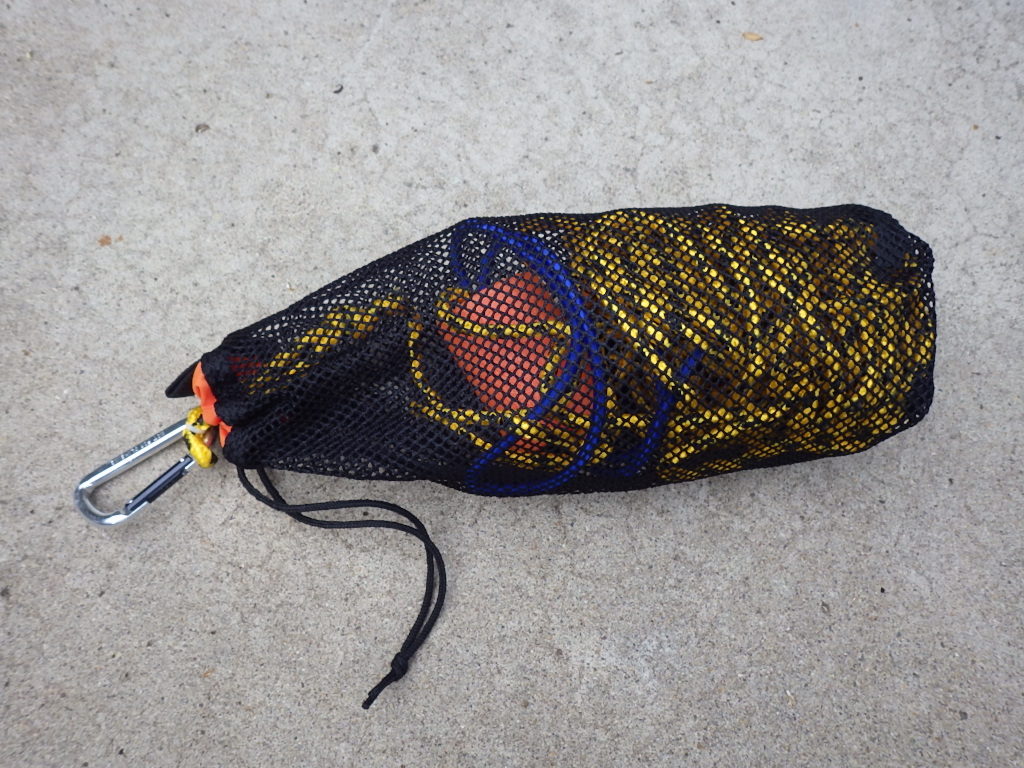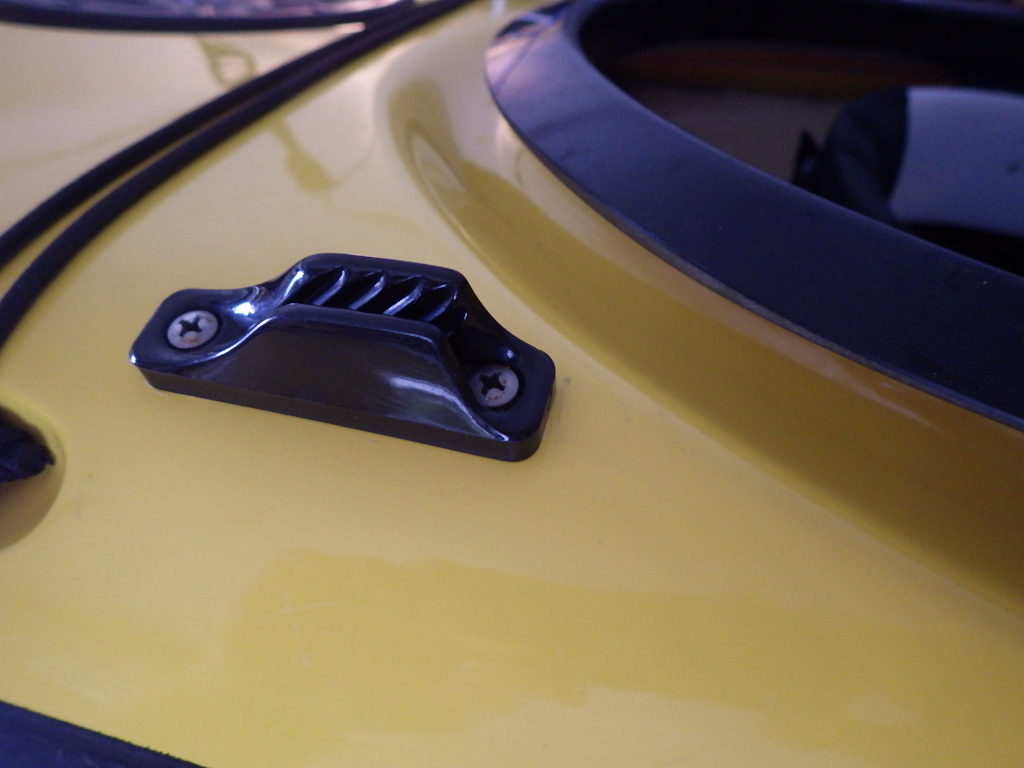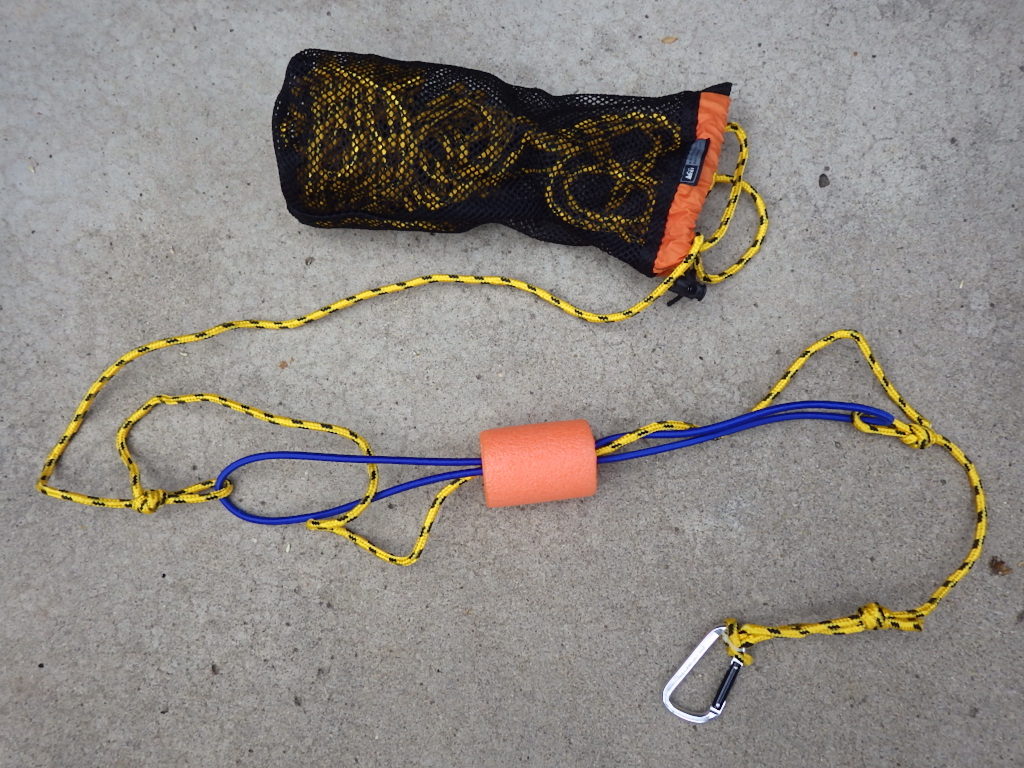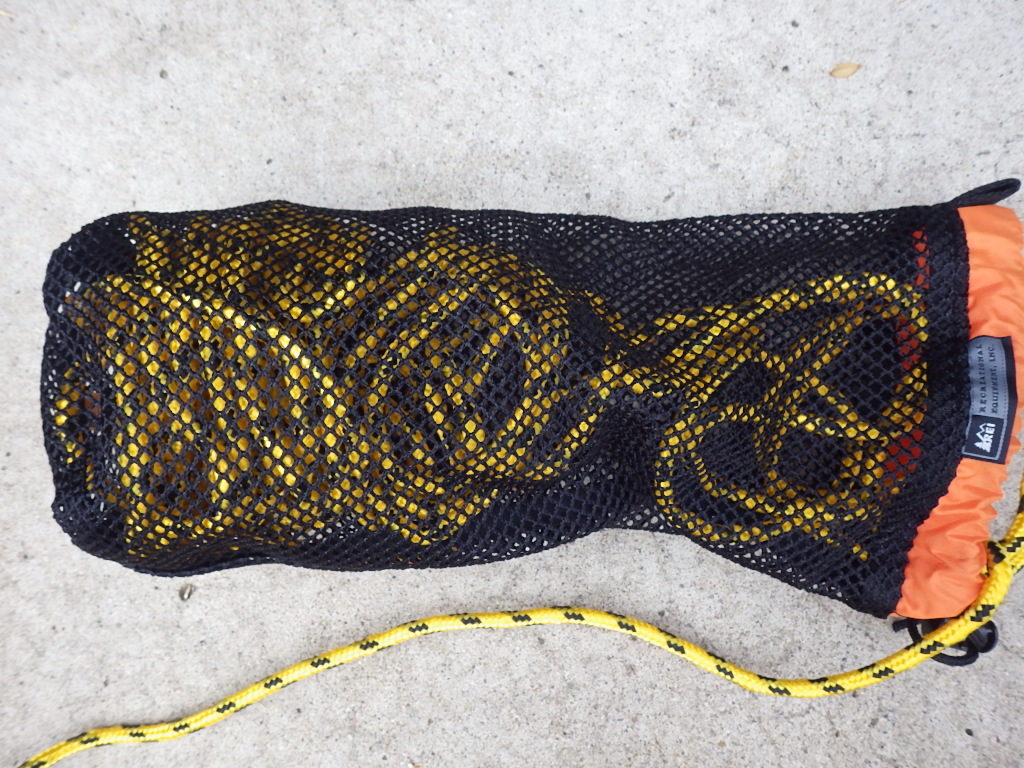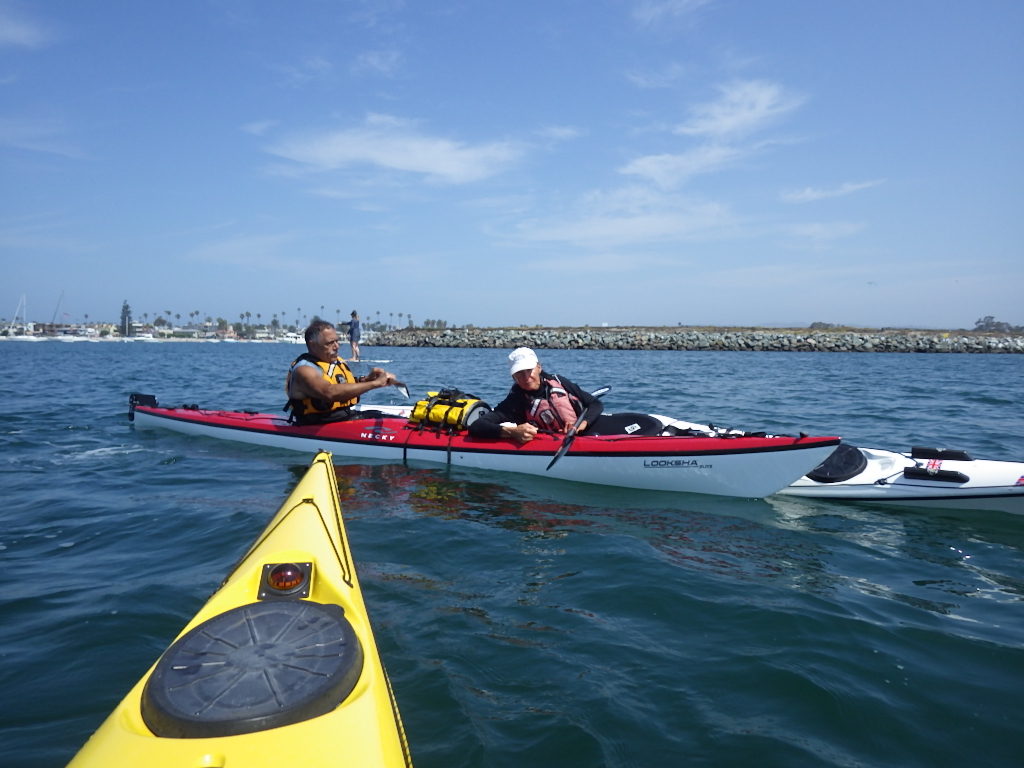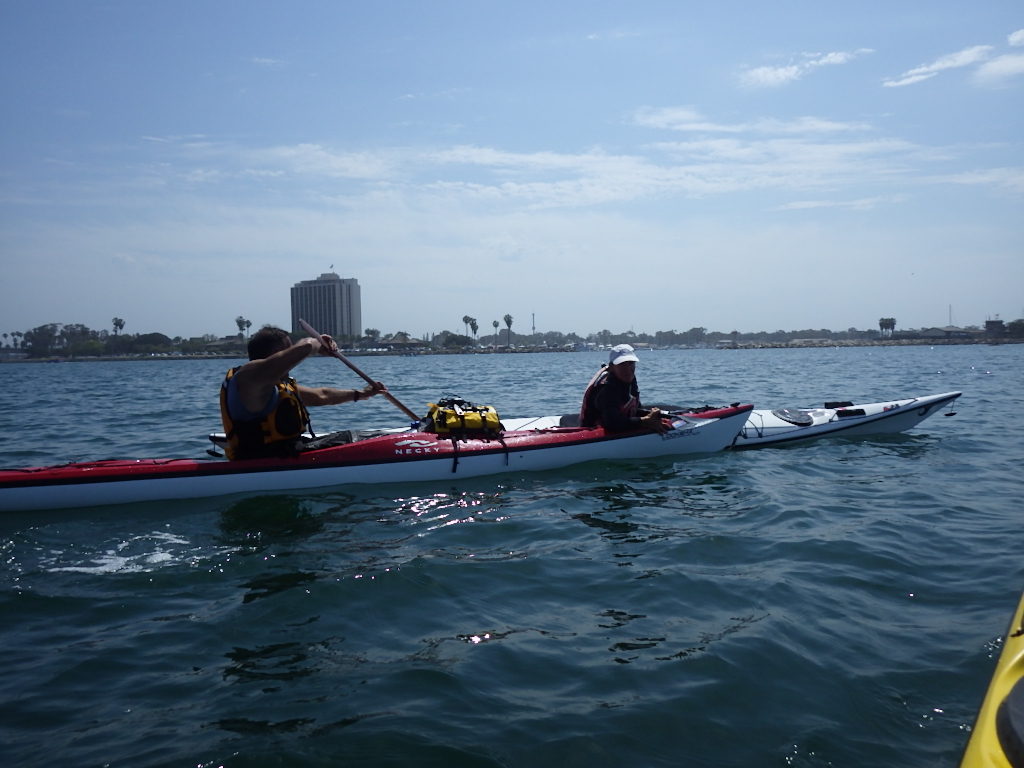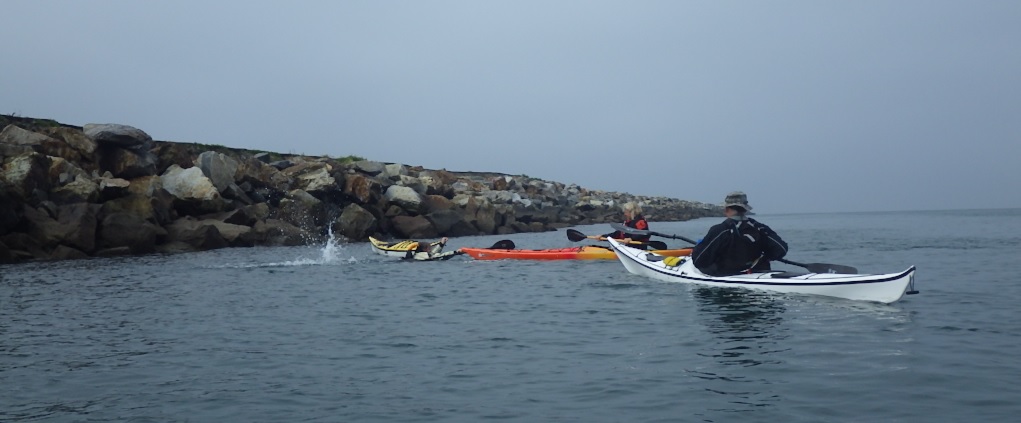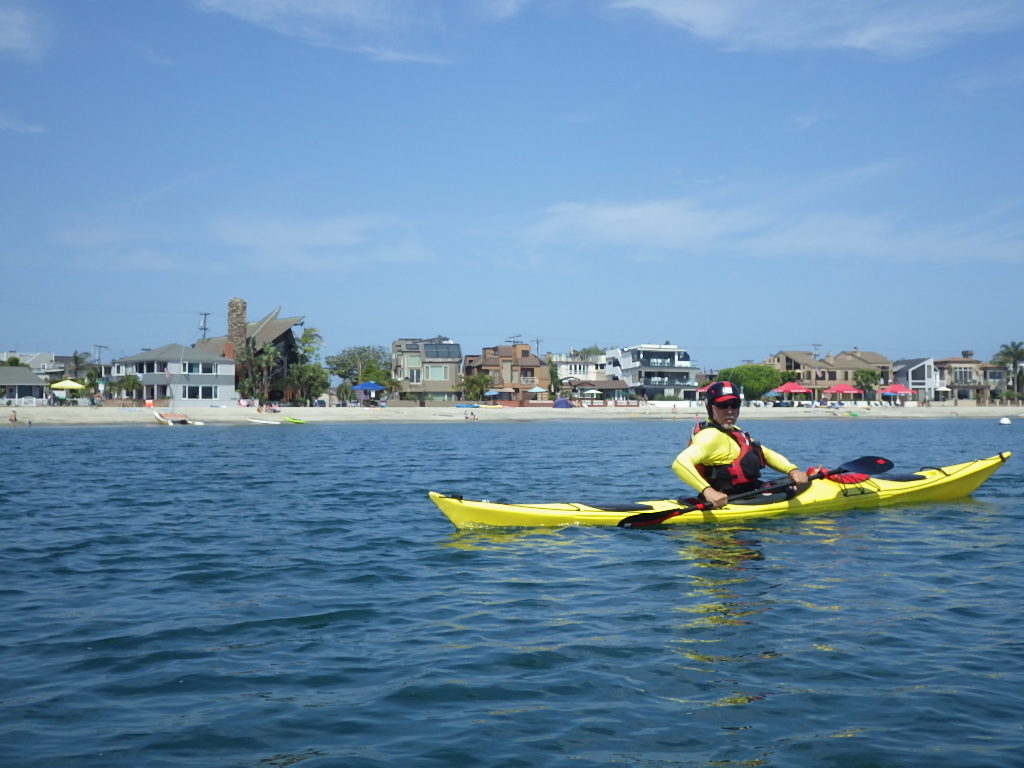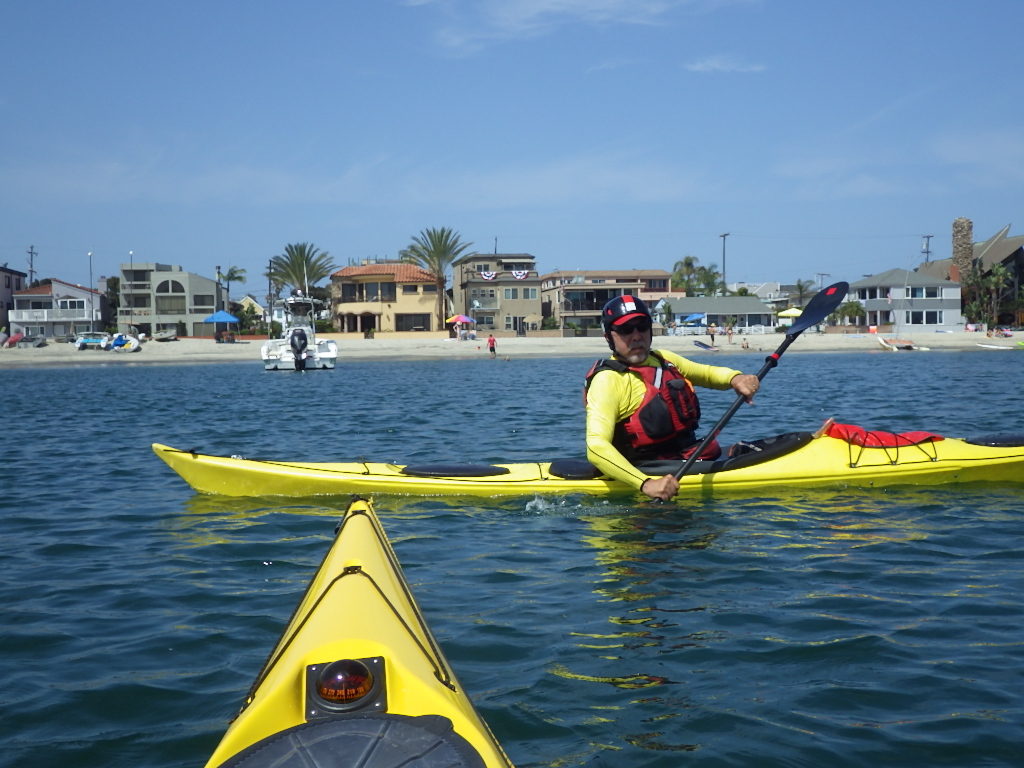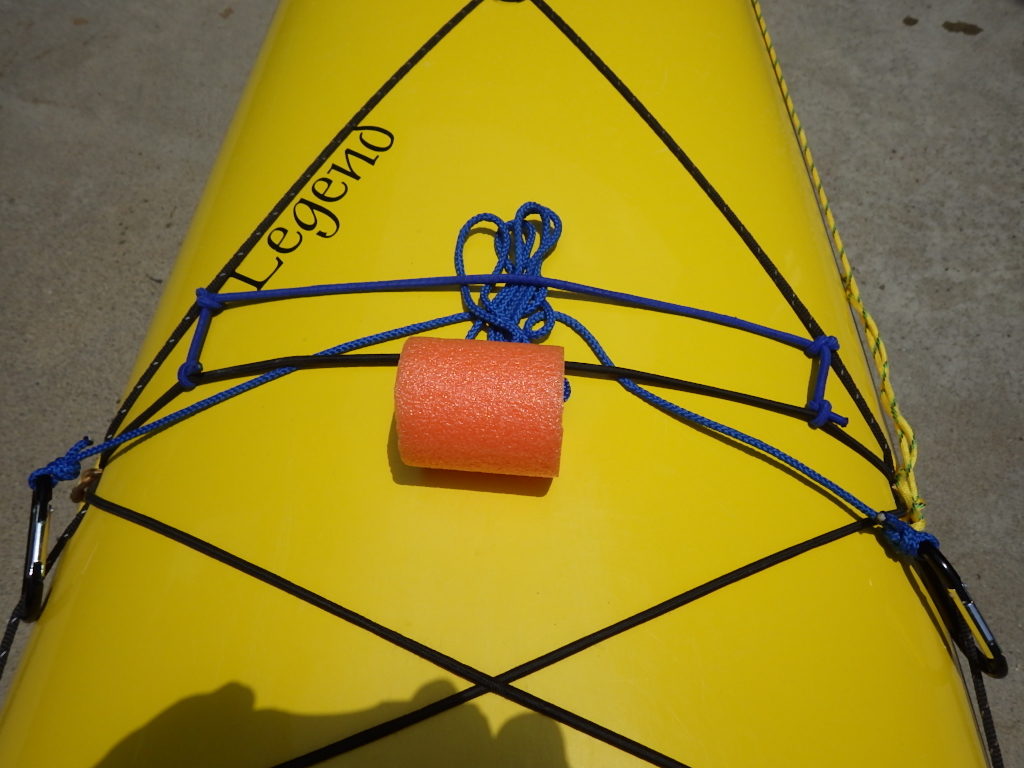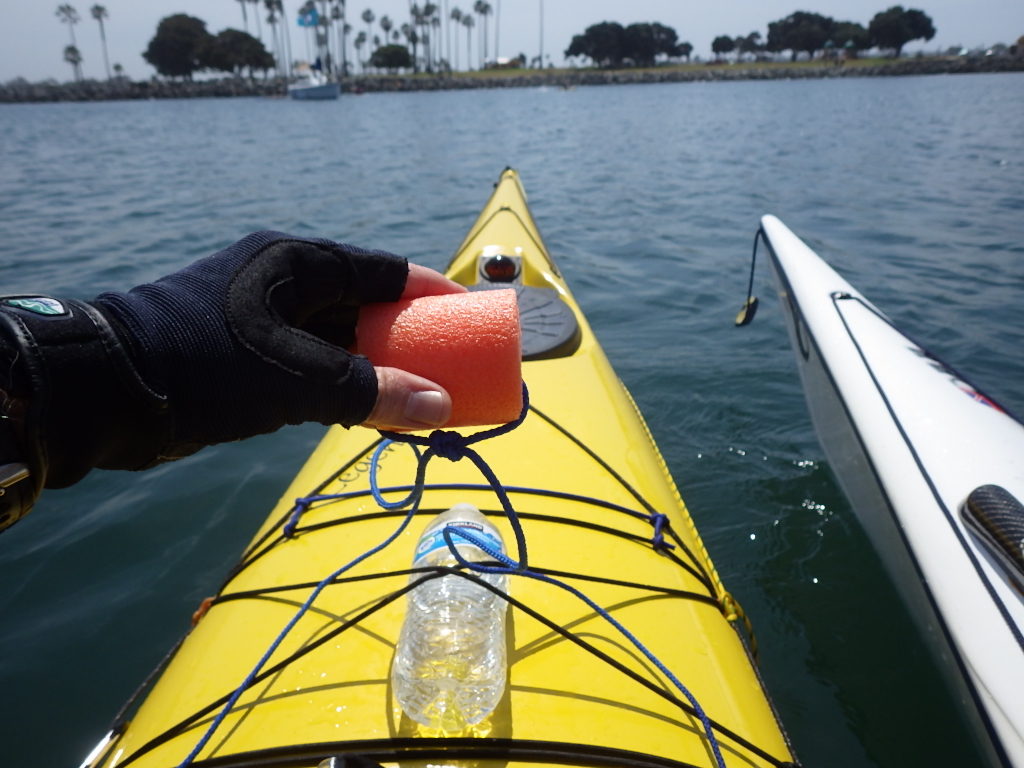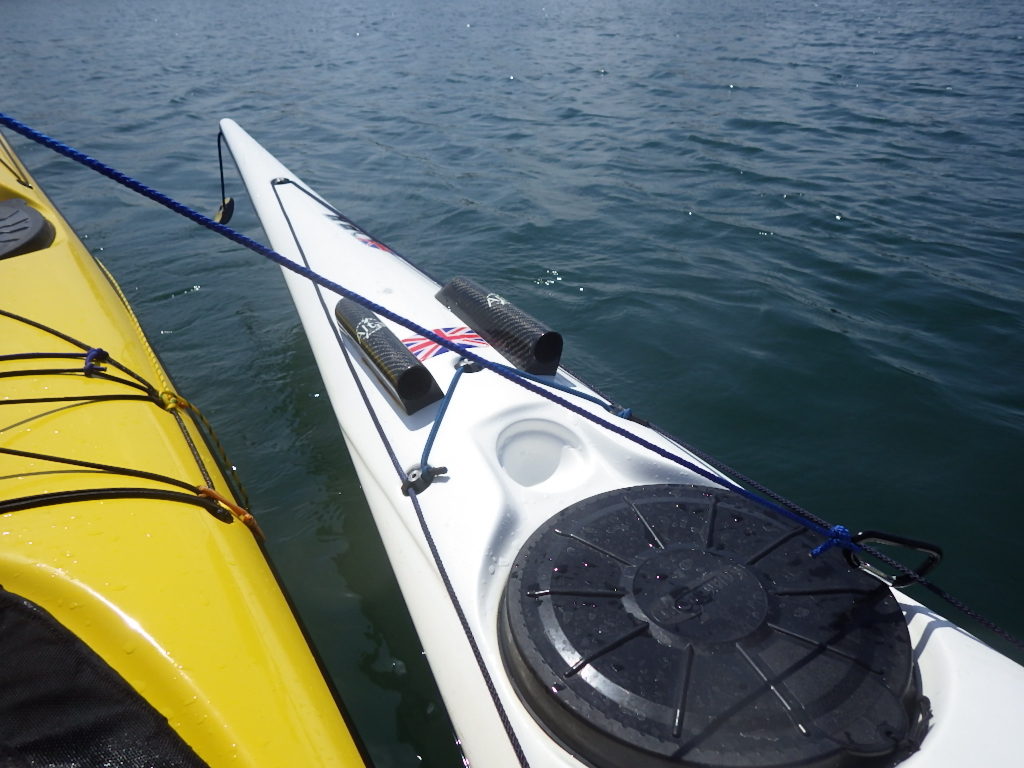-by Jay Murdock, SDKC Safety Editor
Towing a person sitting in a boat can be divided into two categories, a quick, or short tow for rescue, and an in-line tow, which is not as urgent, and is for distance. The in-line tow is done with a 30-50 foot line that is used for longer tows. You can purchase a tow line worn at the waist, or you can make one from scratch. You will need a floating polypropylene line, a toothless carabiner, bungee cord, a float made from a kids pool float, and a jam cleat attached to your boat on the aft deck near the back of your cockpit opening. Below are photos of one that was constructed in about an hour. The bungee and float make up the “compression link” that helps keep tension in the line, and smoothes out the tow. Stow the tow line in a net bag with the carabiner sticking out for quick employment. After use, stuff the line in the bag, and do not roll it up or loop it. That will allow the line to feed out of the bag freely. To employ, simply attach the carabiner to the bow handle or deck line of the other boat, let the line feed out, then push the line into the jam cleat, leaving enough line to lay across your lap for a quick disconnection if needed. The cleat in the photo is mounted on the starboard side. Be sure to use stainless steel hardware and big washers on the underside.
Click on photos to enlarge
The Quick Tow can be divided into two methods: The Contact Tow and the Short-Line Tow (sometimes called the “Close Tow”). While these methods can be used for greater distances, the in-line tow with a longer line is more efficient for that.
Contact Tow- The fastest way to tow someone still in their boat, and used for rescue, is simply having the person lean across your boat fore deck and grab the deck lines. The more forward they do this on your fore deck, the easier it is to paddle while they hold on. Jane is showing the two positions while Alfredo paddles.
The Contact Tow can also be used to back a swimmer away from a hazard, as shown in the photo below of Jen performing a rescue tow from her bow. Simply have them hold onto your bow handle as you back paddle. Have them keep their face away from your bow to avoid contact if a wave pushes your boat into them. In this practice session the conditions allowed for both the swimmer and her boat to be towed. In hazardous conditions always tow just the swimmer, then get the boat as the situation and resources allow.
The Power Back (or Reverse) Stroke- Dennis demonstrates in the photos below a technique for a safer and stronger way to pull a swimmer away from a hazard. Twisting your torso as far as you can will let you peek behind you as you back paddle to avoid collisions. Leaning out on the paddle shaft as you sweep it toward your bow will add to the power of the stroke. It is always best to approach the swimmer going forward in order to tow them from your bow so you can keep an eye on them. That means you need a powerful back stroke to quickly and safely rescue them.
Short-Line Tow– This method involves a line of 5-10 feet, and can be performed using your longer tow line, tied off for a short line, or a dedicated short line ready to employ and stored on your fore deck. The best tow line choice is with a dedicated line kept on your deck in front of you to use immediately for a quick tow rescue. You can buy a manufactured non-stretch contact line, or make something yourself. If you make this yourself, be sure to file off the carabiner gate tooth so it will not snag the line, or better, buy a stainless steel carabiner that is “toothless”. Always hook the carabiner to the deck line from beneath that line, with the gate facing up. Store the line across your fore deck by hooking a carabiner to each side deck line, so you can employ it to the other boat on either side. Keep the excess line under a bungee line, or crisscross the line over the deck (the bungee storage deploys faster though). Below are photos showing how this works, demonstrating towing a boat alongside yours, or hooking the carabiner to the bow or stern handle for an emergency quick tow. Using that orange float keeps the line from sinking if you need to toss it to another kayaker, and acts as a handle for pulling the line out from under the bungee cords on your deck.
If you use a line for towing, always have a knife ready for quick use in case you get tangled in the line.


